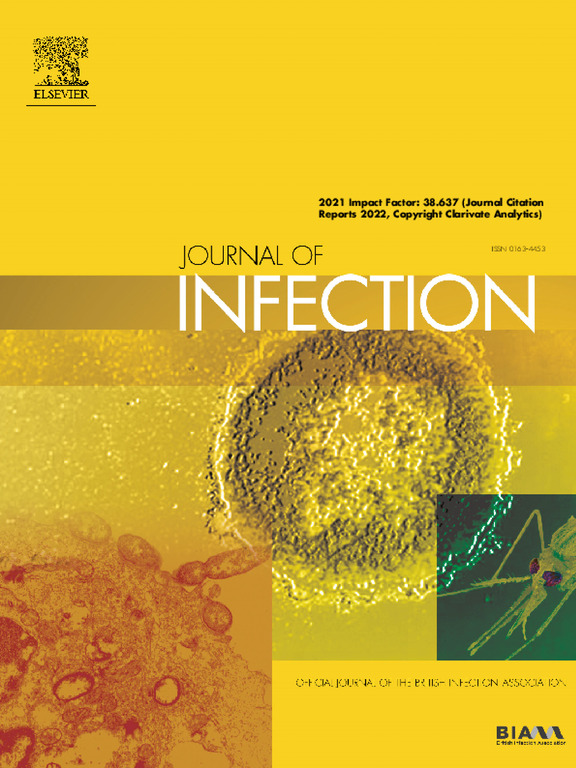中国城市化对邻近城市流感发病的影响
IF 14.3
1区 医学
Q1 INFECTIOUS DISEASES
引用次数: 0
摘要
虽然城市化与流感之间的关系越来越受到关注,但以往的研究往往基于单一指标来考察这种关系,而忽视了城市发展的多维度及其对邻近城市流感发病率的综合影响。方法:构建基于社会、经济、生态三个维度的多维城镇化评价框架,对城镇化进行综合评价。在此基础上,采用贝叶斯时空模型和空间Durbin模型分析城市化发展对城市内和城市间流感发病率的影响。通过区域异质性分析探讨城市化对城市流感发病率的影响。结果:2014 - 2019年,全国283个地级市共发生流感病例5062254例。城市化综合、社会和经济指标的每一个标准差增量分别与流感发病率增加14.9% (95% CI: 6.1%, 24.3%)、9.9% (95% CI: 3.5%, 16.3%)和13.4% (95% CI: 4.5%, 23.7%)相关。城市发展对流感发病率的影响在不同地区差异显著,华南地区的影响最大。此外,城市化对周边城市流感发病具有显著的正向空间溢出效应。结论:城市化及其各维度与当地流感发病风险增加有关,并对周边地区表现出显著的正空间溢出效应。在中国快速城市化进程中,地方政府应优先考虑卫生服务的公平性和可及性,加强城市间流感疫情的协同防控。本文章由计算机程序翻译,如有差异,请以英文原文为准。
The impact of urbanization in China on influenza incidence across neighboring cities
Objectives
Although the relationship between urbanization and influenza has received increasing attention, previous studies have often examined this relationship based on single indicators, neglecting the multi-dimensions of urban development and their integrated impact on influenza incidence in neighboring cities.
Methods
A multidimensional urbanization evaluation framework was developed based on social, economic, and ecological dimensions to comprehensively assess urbanization. Then, we analyzed the impact of urbanization development on influenza incidence within and across cities using Bayesian spatiotemporal models and spatial Durbin models. Regional heterogeneity analysis was performed to investigate the impact of urbanization on influenza incidence within cities.
Results
From 2014 to 2019, there were 5,062,254 influenza cases in 283 prefecture-level cities in China. Each standard deviation increment in comprehensive, social, and economic indexes of urbanization was associated with a 14.9% (95% CI: 6.1%, 24.3%), 9.9% (95% CI: 3.5%, 16.3%), and 13.4% (95% CI: 4.5%, 23.7%) increase in influenza incidence, respectively. The effects of urban development on influenza incidence varied significantly across regions, with the greatest impact found in southern China. Additionally, a significant positive spatial spillover effect of urbanization was observed on influenza incidence in surrounding cities.
Conclusions
Urbanization and its various dimensions were linked to increased risk of local influenza incidence, which also showed substantial positive spatial spillover effect to surrounding areas. During the rapid urbanization process in China, local governments should prioritize equity and accessibility in healthcare services and strengthen the coordinated prevention and control of influenza epidemics across cities.
求助全文
通过发布文献求助,成功后即可免费获取论文全文。
去求助
来源期刊

Journal of Infection
医学-传染病学
CiteScore
45.90
自引率
3.20%
发文量
475
审稿时长
16 days
期刊介绍:
The Journal of Infection publishes original papers on all aspects of infection - clinical, microbiological and epidemiological. The Journal seeks to bring together knowledge from all specialties involved in infection research and clinical practice, and present the best work in the ever-changing field of infection.
Each issue brings you Editorials that describe current or controversial topics of interest, high quality Reviews to keep you in touch with the latest developments in specific fields of interest, an Epidemiology section reporting studies in the hospital and the general community, and a lively correspondence section.
 求助内容:
求助内容: 应助结果提醒方式:
应助结果提醒方式:


